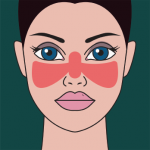Dr. Salmon notes the meticulous descriptive work done by Dr. Kaposi and others of the era laid the foundations for later understanding. “He was very precise—he was phenotyping in the best way he could—describing in great detail the appearance of the rashes and evolution of the patient’s illness over months. These are starting points to understand disease mechanism. If you don’t understand the pathologic signs and symptoms of the patient, it’s hard to explore what drives them or why they occur.”
She continues, “In the 1800s, they could only describe using physical examination and microscopy. But with excellent descriptions, you can create clusters of patients with common features—which is what they did.” She also emphasizes the importance of Kaposi’s contribution in recognizing SLE as a systemic disease, because that enabled the search for underlying mechanisms.
“We could not elucidate pathophysiology of systemic diseases like lupus without first looking for commonalities and distinctions among patients,” says Dr. Salmon.
The case study approach still has relevance for continuing to advance medical knowledge. Dr. Salmon notes, “Case series of complex patients have expanded our understanding of innate immune mechanisms, specifically those with extreme phenotypes driven by unique genetic alterations in highly informative genes. They have taught us about relationships between cytokines and their signaling pathways with clinical signs and symptoms.”
For an example, she points to the work of Daniel Kastner, MD, PhD, and others who have chronicled rare syndromes involving mutations of genes involved in the inflammasome. Dr. Salmon says, “They are called autoinflammatory diseases. But if we didn’t uncover these pathways and these mutations, we would know much less about the inflammasome and the IL-1 pathway.”
Similarly, she notes work that carefully described clinical features of rare individuals who have mutations in genes related to the interferon-alpha pathway. Insights from these patients have expanded the understanding of lupus pathogenesis.
‘Dr. Kaposi was very precise—he was phenotyping in the best way he could—describing in great detail the appearance of the rashes & evolution of the patient’s illness over months. These are starting points to understand disease mechanism.’ —Dr. Salmon
Classification: Then & Now
Dr. Kaposi’s work is also interesting in the context of the current challenge of classifying patients with complex and overlapping multisystem autoimmune diseases. Earlier practitioners distinguished lupus erythematosus from other types of skin problems (like from tuberculosis); Dr. Kaposi went on to note the systemic nature of SLE and to further distinguish a discoid-type lupus from a systemic type. For Dr. Kaposi to group together patients with such varied manifestations as arthritis, pleurisy and coma, all of whom also had cutaneous lupus, was bold and prescient.


